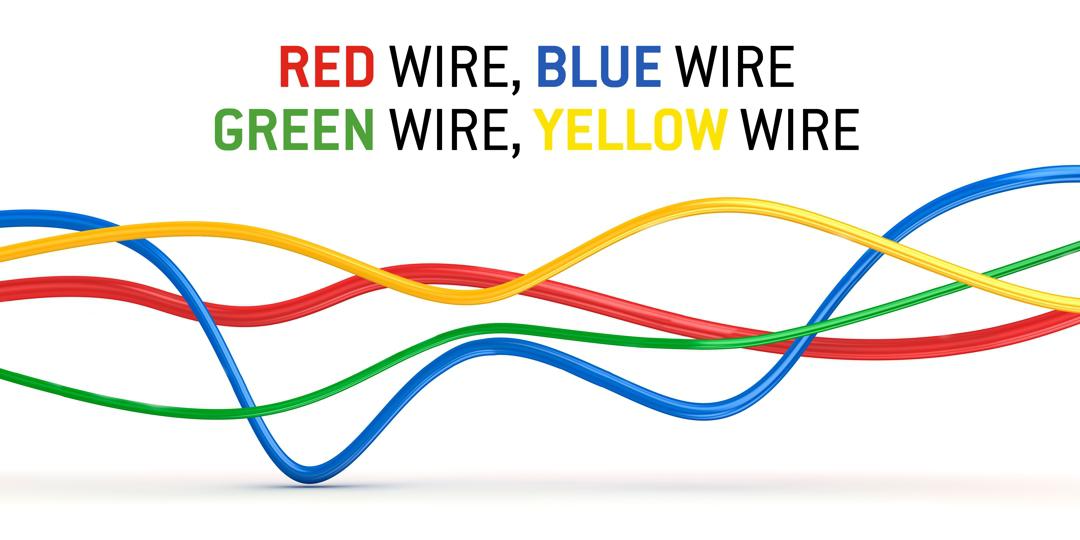Electrical Wires: Knowing Which is Which

We all know that pivotal scene in the movie where the good guy is trying to decide which wire to snip. One wire defuses the bomb. The other, “Kerblam!” This knowledge isn’t secret, nor does it need to be decoded. In fact, there are specific wire colors that indicate what they are and how they should be treated.
Knowing what those colors are is key when trying to understand your home’s electrical system.
George Saldana, owner of Mister Sparky of San Antonio, explains what those colors mean, and a few things to keep in mind when checking your wiring system.
Black Wire: Hot
First, you should always be aware of which wires may pose a safety hazard. Black, red, white with black or red tape will always indicate a hot wire. The term “hot” means these wires carry a live current from your electric panel to the destination. While white wiring is permitted— only when clearly marked with black or white tape—using any other color for a wire carrying current is strongly discouraged. This may pose a serious safety hazard that could result in death. Black or red wires always carry power from the service panel (breaker box) to your home’s devices.
Red Wire: Hot
Red wires are usually used as a secondary hot wire. Red wires are also hot and should be clearly marked to avoid the dangers of electrocution. Red wires are commonly used when installing ceiling fans, where the light switch may be.
Green Wire: Ground
Green insulated wires are often used for grounding. Ground screws on electrical devices are often painted green as well. Never use a green wire for any purpose other than for grounding, as this may pose a serious threat of electrocution for you or a professional working on your home’s electrical system.
- White or Gray Wires: Neutral
White or gray indicates a neutral wire. The term neutral can be dangerously deceiving, as it appears to imply a non-electrified wire. However, neutral wires may carry power. Thus, both hot and neutral wires have the potential to shock and injure you if not handled properly. - Blue and Yellow Wires: Hot
Blue and yellow wires are sometimes used as hot wires. Blue wires are commonly used for travelers in three-way and four-way switch applications.
A Helpful Tip: A multimeter will help you check and troubleshoot your home’s electrical wiring system. The multimeter can be used to check if there is an electric current flowing and how much. This can be especially useful if your home’s electrical system is old, outdated or if you are unsure which wires may be hot or not.
If you’re having difficulty with your home’s wiring system, we recommend you turn to the pros and contact your local Mister Sparky.
